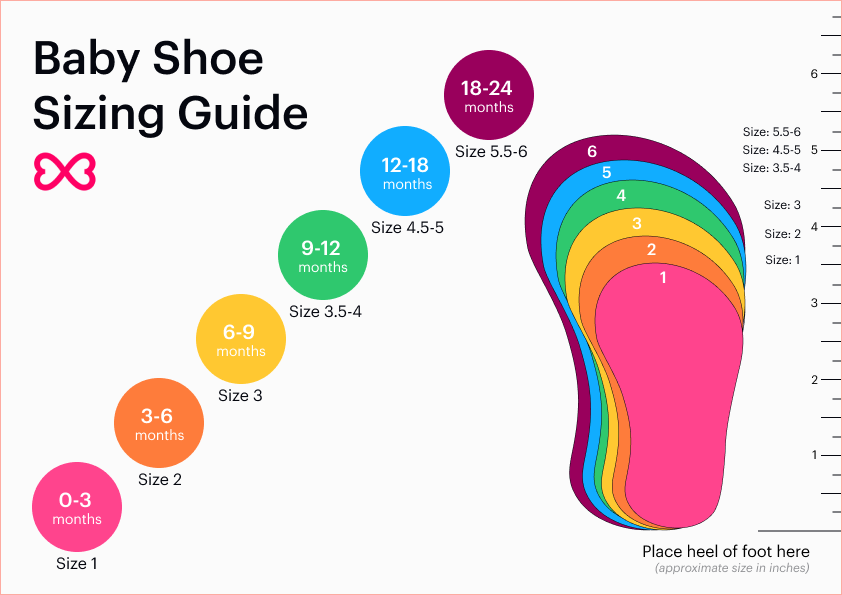
Baby Shoe Sizes: A Comprehensive Guide for Parents
Navigating the world of baby shoe sizes can be a daunting task for new parents. With a plethora of sizing systems and measurements, it’s easy to get overwhelmed. This comprehensive guide will provide you with all the essential information you need to ensure your little one’s feet are comfortably and appropriately shod.
Understanding Baby Shoe Sizing Systems
In the United States, baby shoe sizes are typically measured in inches or centimeters. The most common sizing system is the Brannock Device, which measures the length and width of the foot. Other sizing systems include the Mondopoint system, which uses millimeters, and the European system, which uses a combination of letters and numbers.
Measuring Your Baby’s Feet
To accurately determine your baby’s shoe size, it’s important to measure their feet properly. Here’s a step-by-step guide:
- Place your baby’s foot on a flat surface.
- Use a ruler or measuring tape to measure the length of the foot from the heel to the tip of the longest toe.
- Measure the width of the foot at the widest point.
- Round up to the nearest quarter inch or centimeter.
Choosing the Right Shoe Size
Once you have your baby’s measurements, you can use a shoe size chart to determine the appropriate size. It’s important to note that shoe sizes can vary slightly between brands, so it’s always best to try on shoes before purchasing them.
When trying on shoes, make sure there is about a half-inch of space between the tip of the longest toe and the end of the shoe. The shoe should also fit snugly around the heel and instep without being too tight.
Common Baby Shoe Sizes
The following table provides a general guide to baby shoe sizes in inches and centimeters:
| Age | Average Foot Length (inches) | Average Foot Length (centimeters) |
|---|---|---|
| Newborn | 3.5-4 | 8.9-10.2 |
| 3 months | 4-4.5 | 10.2-11.4 |
| 6 months | 4.5-5 | 11.4-12.7 |
| 9 months | 5-5.5 | 12.7-14 |
| 12 months | 5.5-6 | 14-15.2 |
| 18 months | 6-6.5 | 15.2-16.5 |
| 2 years | 6.5-7 | 16.5-17.8 |
Special Considerations
- Wide feet: If your baby has wide feet, you may need to purchase shoes that are a half size or full size larger than their measured foot length.
- Narrow feet: If your baby has narrow feet, you may need to purchase shoes that are a half size or full size smaller than their measured foot length.
- High instep: If your baby has a high instep, you may need to purchase shoes with a higher vamp (the part of the shoe that covers the top of the foot).
- Flat feet: If your baby has flat feet, you may need to purchase shoes with arch support.
When to Buy New Shoes
Babies’ feet grow rapidly, so it’s important to check their shoe size regularly. As a general rule, you should buy new shoes every 2-3 months. If you notice that your baby’s shoes are too tight or too loose, it’s time to get a new pair.
Tips for Choosing Baby Shoes
- Look for shoes made from breathable materials, such as leather or canvas.
- Choose shoes with a flexible sole that allows for natural foot movement.
- Avoid shoes with high heels or pointed toes.
- Make sure the shoes fit snugly around the heel and instep without being too tight.
- Inspect the shoes regularly for any signs of wear or damage.
Conclusion
Choosing the right baby shoe size is essential for your child’s comfort and foot development. By following the tips and guidelines outlined in this guide, you can ensure that your little one’s feet are properly shod for every adventure. Remember to check their shoe size regularly and replace shoes as needed to keep their feet healthy and happy.
